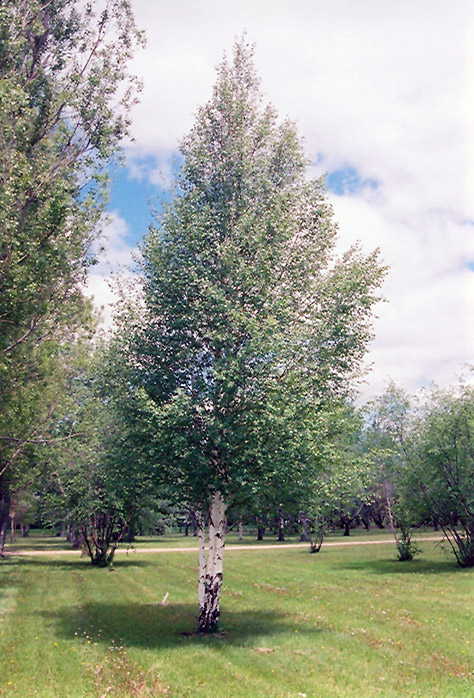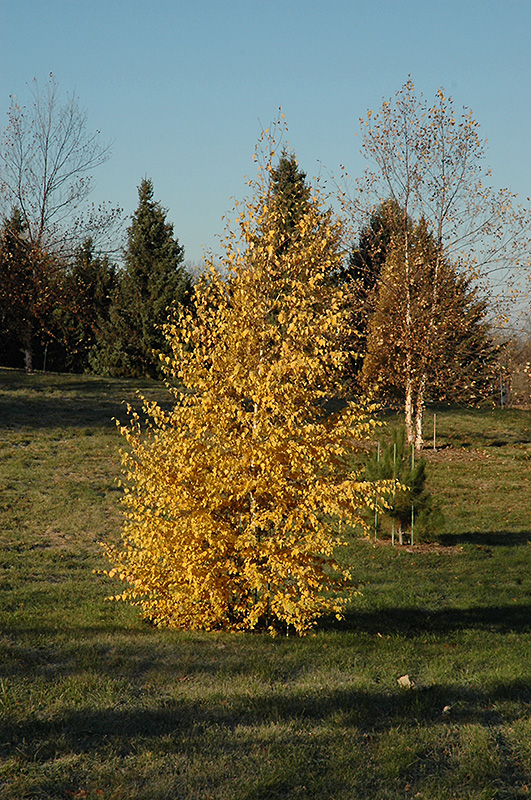Find Plants
Height: 40 feet
Spread: 25 feet
Sunlight:
![]()
![]()
Hardiness Zone: 2
Other Names: Silver Birch, Common Birch
Description:
Popular in Europe, this species often plays second fiddle to its cultivars and paper birch, yet is an outstanding ornamental with its white bark and yellow fall color, very hardy; needs well-drained soils, keep stress-free to prevent birch borer troubles
Ornamental Features
European Birch has dark green deciduous foliage on a tree with an oval habit of growth. The pointy leaves turn an outstanding yellow in the fall. The peeling white bark is extremely showy and adds significant winter interest.
Landscape Attributes
European Birch is a deciduous tree with a shapely oval form. Its relatively fine texture sets it apart from other landscape plants with less refined foliage.
This tree will require occasional maintenance and upkeep, and should only be pruned in summer after the leaves have fully developed, as it may 'bleed' sap if pruned in late winter or early spring. Deer don't particularly care for this plant and will usually leave it alone in favor of tastier treats. Gardeners should be aware of the following characteristic(s) that may warrant special consideration;
- Insects
European Birch is recommended for the following landscape applications;
- Accent
- Shade
Planting & Growing
European Birch will grow to be about 40 feet tall at maturity, with a spread of 25 feet. It has a low canopy with a typical clearance of 3 feet from the ground, and should not be planted underneath power lines. It grows at a fast rate, and under ideal conditions can be expected to live for 40 years or more.
This tree does best in full sun to partial shade. It prefers to grow in average to moist conditions, and shouldn't be allowed to dry out. It is not particular as to soil type or pH. It is somewhat tolerant of urban pollution. Consider applying a thick mulch around the root zone in winter to protect it in exposed locations or colder microclimates. This species is not originally from North America.
Disclaimer - This Plant Finder tool is an online resource representing many of the varieties that we carry over the course of the season, and is intended for informational purposes only. Inventory varies seasonally, so we cannot guarantee that every plant will be in stock at all times - please contact the store directly for availability. It does not include our entire inventory of plants, so be sure to visit our store to see varieties that may not be represented on this list.


